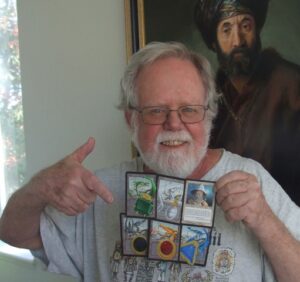Aesthetic Consultation: Dan Frazier

We want to welcome Nick to Commander's Herald, and in this first piece we hope you'll enjoy a feature about prolific Magic artist and creator of the iconic Mox images from Alpha, Dan Frazier!
BOULDER, COLORADO -- Dan Frazier was only a few years removed from teaching middle school art in Colorado when Jesper Myrfors assigned him to illustrate a set of five unusual pieces of jewelry.
Myrfors, the art director for a prototype trading card game later known as Magic: The Gathering, told Frazier the set of five cards would depict fantasy pendants, each one associated with one of the five colors important to the card game.
Now 76 years old, Frazier recalled that conversation with Myrfors -- and those formative first few months of Magic -- with humor. "Jesper told me, 'I want to give you a set of cards,' and he starts listing them -- Mox Sapphire
He understood the assignment, to paint a set of jewelry. But he had one question. "What's a 'Mox'?"
"We don't know," replied Myrfors. "No one knows."
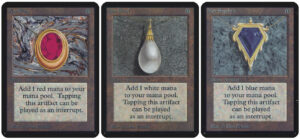
More than 25 years later, we all know what a Mox is, due in no small part to Frazier's art. Each of the original five, as well as Stronghold's Mox Diamond, are immediately recognizable as the crown jewelry of Magic. The original set was painted with oil, some atop marble paper glued to a board.
Artists were told what needed to be illustrated in the early days of Magic, often picking card names needing art from a list. "When we were first given assignments, at first it sounded like we had to do art around the size of a playing card, which was a challenge," he said. "They said, 'No, you don't get all that, you'll get half of that.' And you have to be able to recognize it upside-down and across the table -- that's why the Moxen are like that."
Frazier said he and the other original Magic artists, 25 illustrators in all, were very cognizant of the importance of the art to the game in terms of visual recognition. "You could play with someone in France who couldn't read yours and you couldn't read theirs, but you could play with anyone," he said. "Everyone knew the rule of each card."
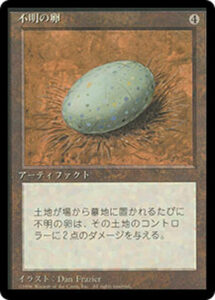
The reason we know the name Dan Frazier and his fellow original Magic artists, and every artist since, is directly a credit to Myrfors. During the development of the game, Myrfors pushed for Magic to utilize unique artwork, as opposed to art that had appeared elsewhere. Original artists like Frazier were paid $100 for each illustration -- "$50 in cash after the game came out, and the other $50 in stock" in Wizards of the Coast. Frazier said it was also Myrfors who insisted the artist's name appear on the card itself. "Because of that, there are so many different artists now for so many things, but you know who's drawing Magic."
With the release of the Dan Frazier is Back: The Allied/Enemy Signets Secret Lair product last year, Magic once again has new Frazier art -- the first he's done for the game since 2007. Extremely popular in Commander, the new art for the original Ravnica block signet series was done in the same style and medium of those Moxen nearly three decades ago. He "can't confirm, nor deny" that the Signets will be joined by more new Frazier art in 2022 (Editor's note: He can confirm it now).
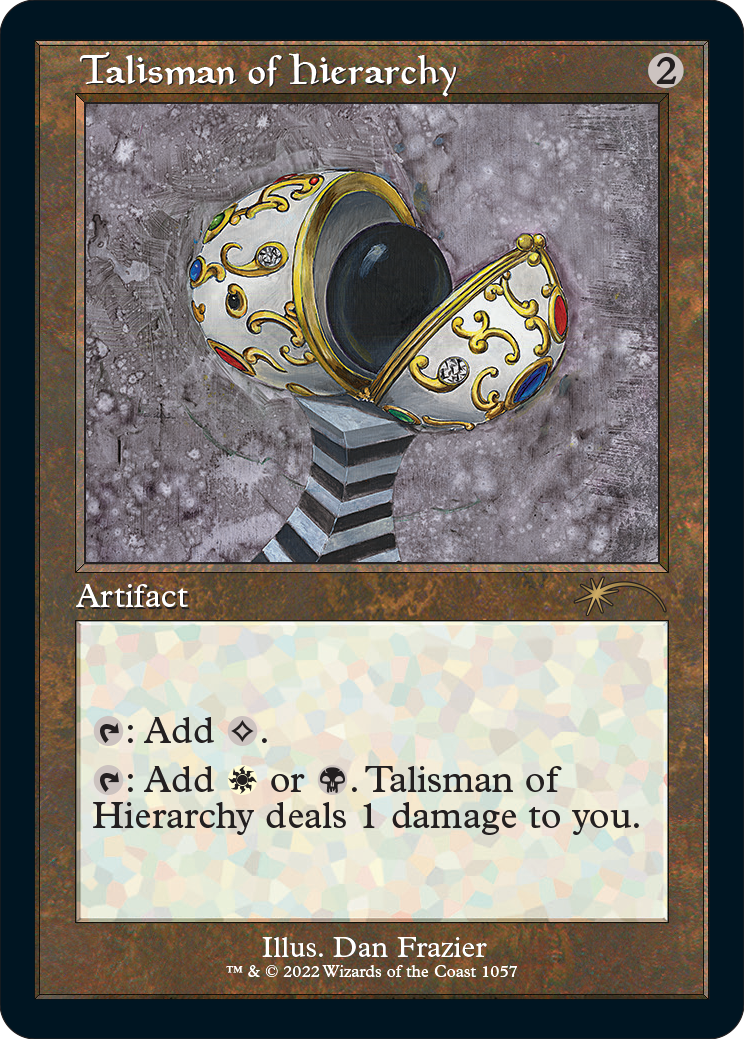
Over the years, Frazier's created the art for a number of Commander staples and niche cards, from Enlightened Tutor to Awakening
Frazier's humble, perhaps overly so, when it comes to his art, saying today's Magic artists "right now are so phenomenal, and I'm mediocre." And despite creating the art for some of the game's most expensive cards in the Moxen, he's quick to point out a dichotomy. "There's a difference between the value of a card and the value of the art on the card -- I understand my quality of my art has something of a collectability as a part of the history of Magic," he said. "It's like baseball cards -- my cards aren't the Babe Ruth card of Magic, but maybe I'm like a Willie Mays."
Frazier is credited with 166 unique pieces of art for Magic cards. His favorite? A basic Swamp from Onslaught. That art was later reprinted in 2018's Commander Anthology Volume II.
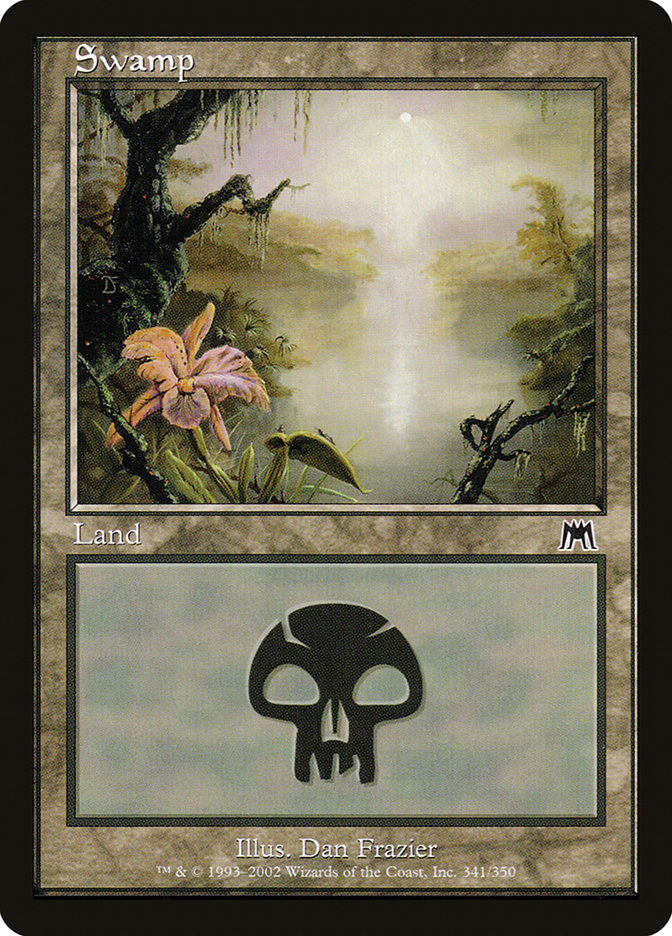
His least favorite has remained consistent, however, for more than 20 years -- Green Ward, from Alpha, also reprinted several times in the early life of the game. Green Ward was part of another cycle assigned to him by Myrfors -- "Like the jewelry ones?" he had asked. "What's a ward?" Myrfors responded, "it's like a symbol, but magical, and you put it on things you want to make magical." Easy to depict in art the size of a passport stamp, right?
His place in Magic's history has drawn him plenty of attention at signing events, and he credits New York-based artist agent and signing service operator Mark Aronowitz with carving out a niche that allows artists to continue making a living from their art. He recalled a GenCon one summer many years ago where a fan approached his booth and slapped "a stack of 90 Moxen each" on the table seeking signatures. "At that time we were signing for free, and there was no way to pay for lodging or anything -- there was no way to help defray the cost" of traveling to events. "It's not just about the time you spend at the event, it's also the travel, the airport, hotel -- it'll eat up the whole week."
Frazier said Aronowitz, in another life, operated a comic book store in New York and started catering to the Magic crowd. He invited Frazier, a resident of Boulder, Colorado, to do an in-person showcase. "He flew me in from Denver, and he's been like my agent ever since -- he's created a career for a lot of different artists, doing signings, selling prints and originals, alters, he just makes everybody really happy," Frazier said. "We can trust him, and a lot of people make a living because of him." For inquiries about Dan Frazier signings and alters -- including his "Mox Dragon" art series -- contact Aronowitz at serra3@optonline.net.
Frazier also operates a website that can be found at www.danfrazier.com.